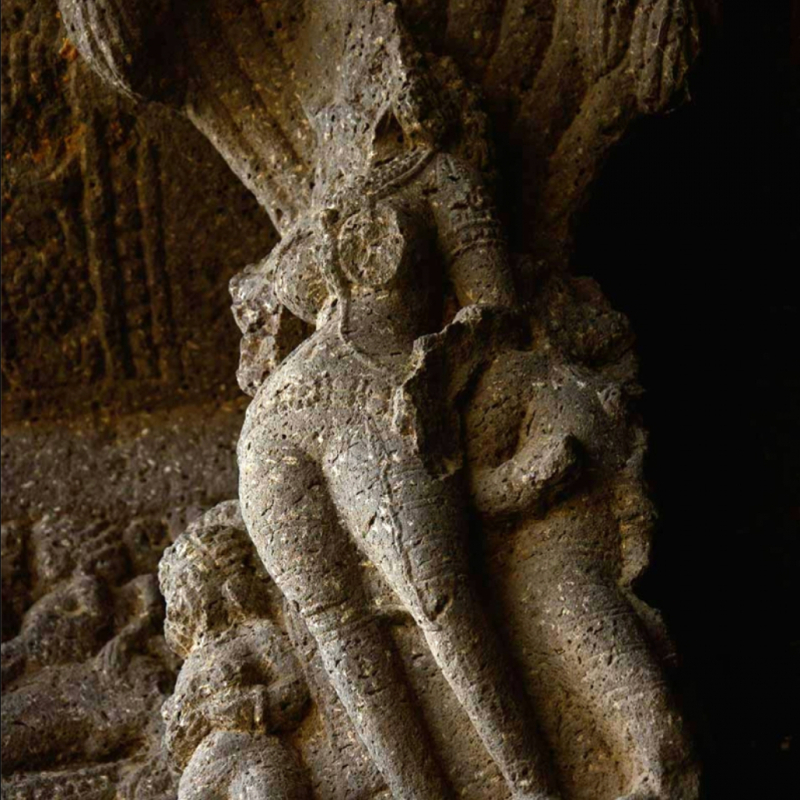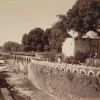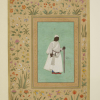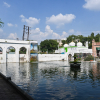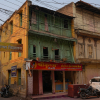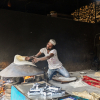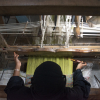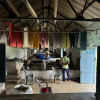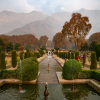The Aurangabad caves, nestled in the Sihyachal ranges north of the city, rise above the plains to a height of 700 feet. Overlooking the Dr Babasaheb Ambedkar Marathwada University campus and situated 8 km from the railway station, this 2000-year-old group of caves, often overshadowed by the World Heritage sites of Ajanta and Ellora, stands in mute testimony to the ancient history of the region. The caves are bereft of inscriptions, but interestingly, a reference to the Aurangabad caves has been found in an inscription at Kanheri, a group of cave temples in Mumbai’s Sanjay Gandhi National Park.
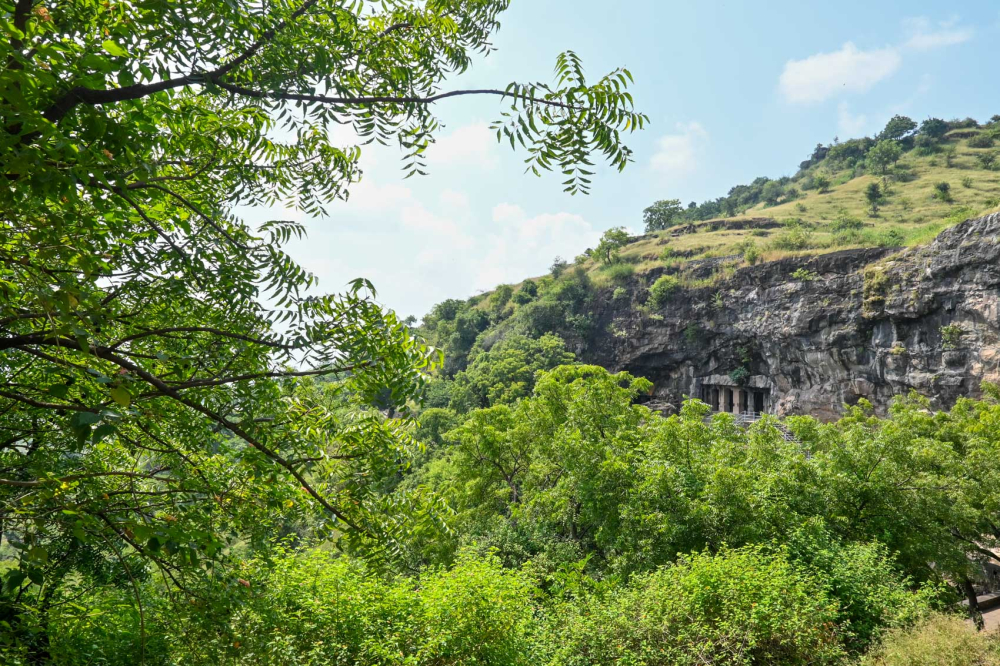
Exterior view of Aurangabad Caves. (Picture Credits: Anil Purohit)
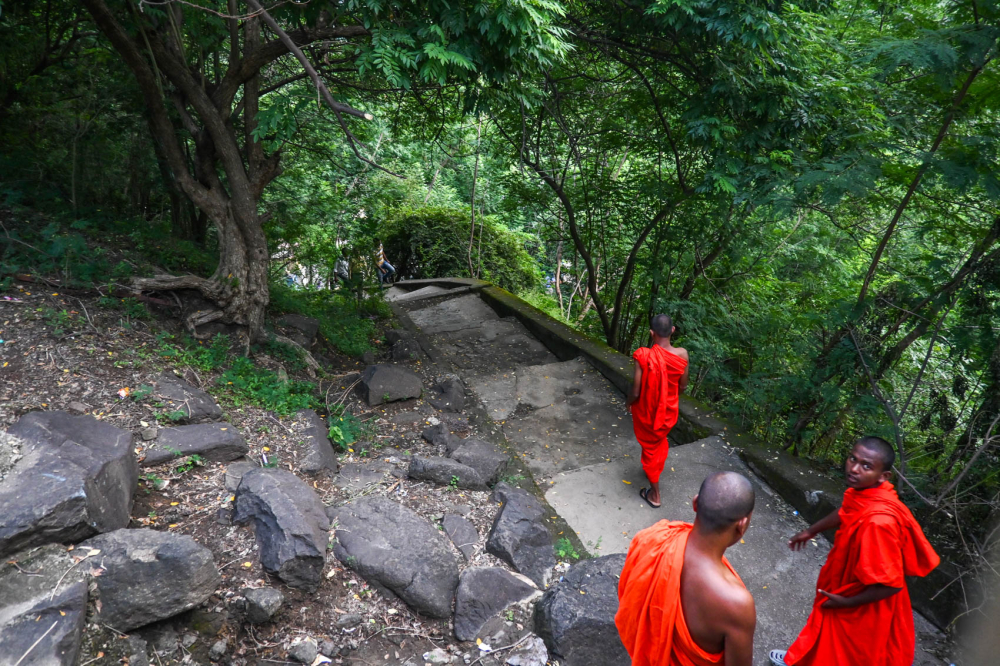
Stairs leading to the Aurangabad Caves. (Picture Credits: Anil Purohit)
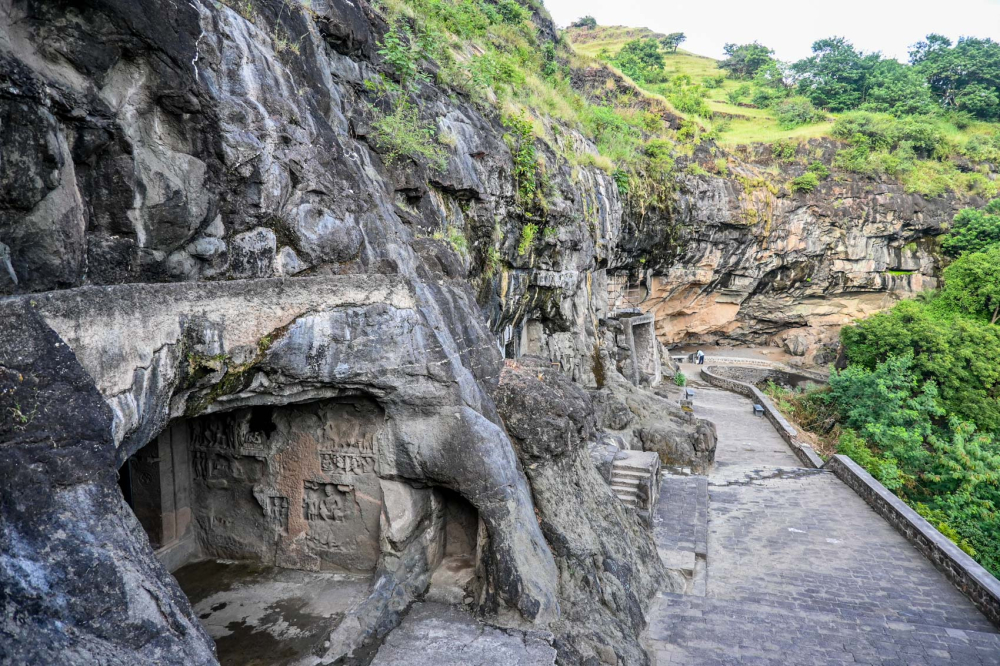
View of Cave 2 and a part of Caves 1-5. (Picture Credits: Anil Purohit)
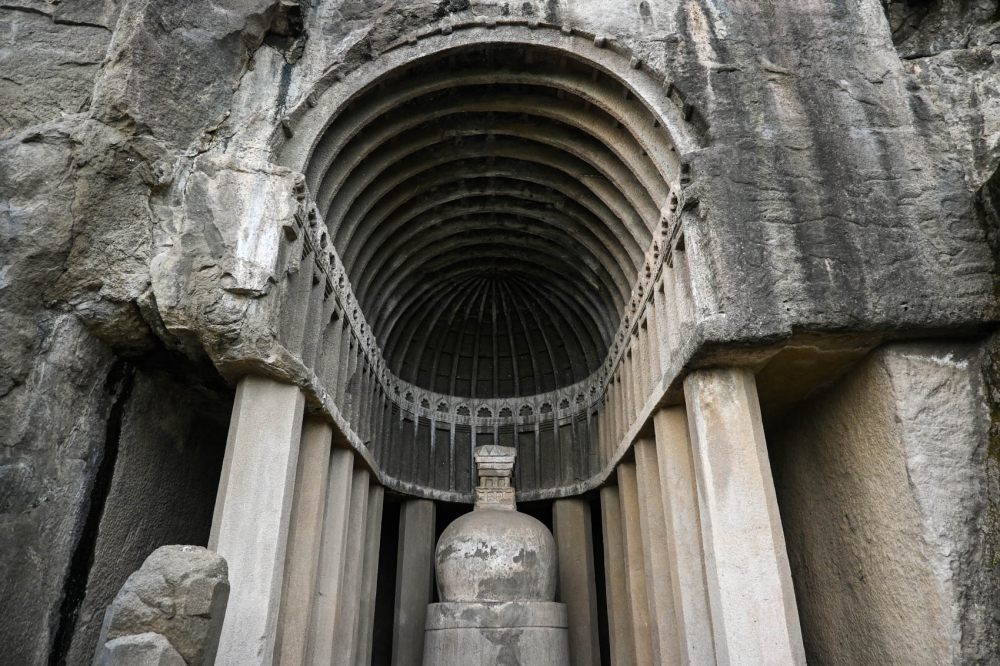
The chaitya in Cave 4. (Picture Credits: Anil Purohit)
The chaitya at the Aurangabad caves, numbered as Cave 4, is the only early cave that was excavated during the later Satavahana period. Caves 1 and 3 belong to the later Mahayana period and were carved during the Vakataka period. Caves 2 and 5 are unique in that they completely separate the main shrine from the back wall and place it in the centre of the hall. The complex comprises three groups: the first (Caves 1-5) lies northwest of the city, the second (Caves 6-10, including a Hindu cave) northeast, and a third, unadorned group behind Caves 9 and 10.
Cave I
The pillars in Cave 1 showcase a variety of exquisitely carved salabhanjikas (tree goddesses) and ganas (assemblage or troops of demon attendants of Shiva and devis). Ganas, traditionally associated with Shiva and Ganesha, appear short and have paunches, and are seen playing musical instruments. The salabhanjika figure is dressed in a kashta-type saree, a blouse ornate jewellery. A male attendant holds a flower vase, while a gana on the lower side seems to be supporting a mermaid above him. Above, the goddess holds a musical instrument known as lyre.
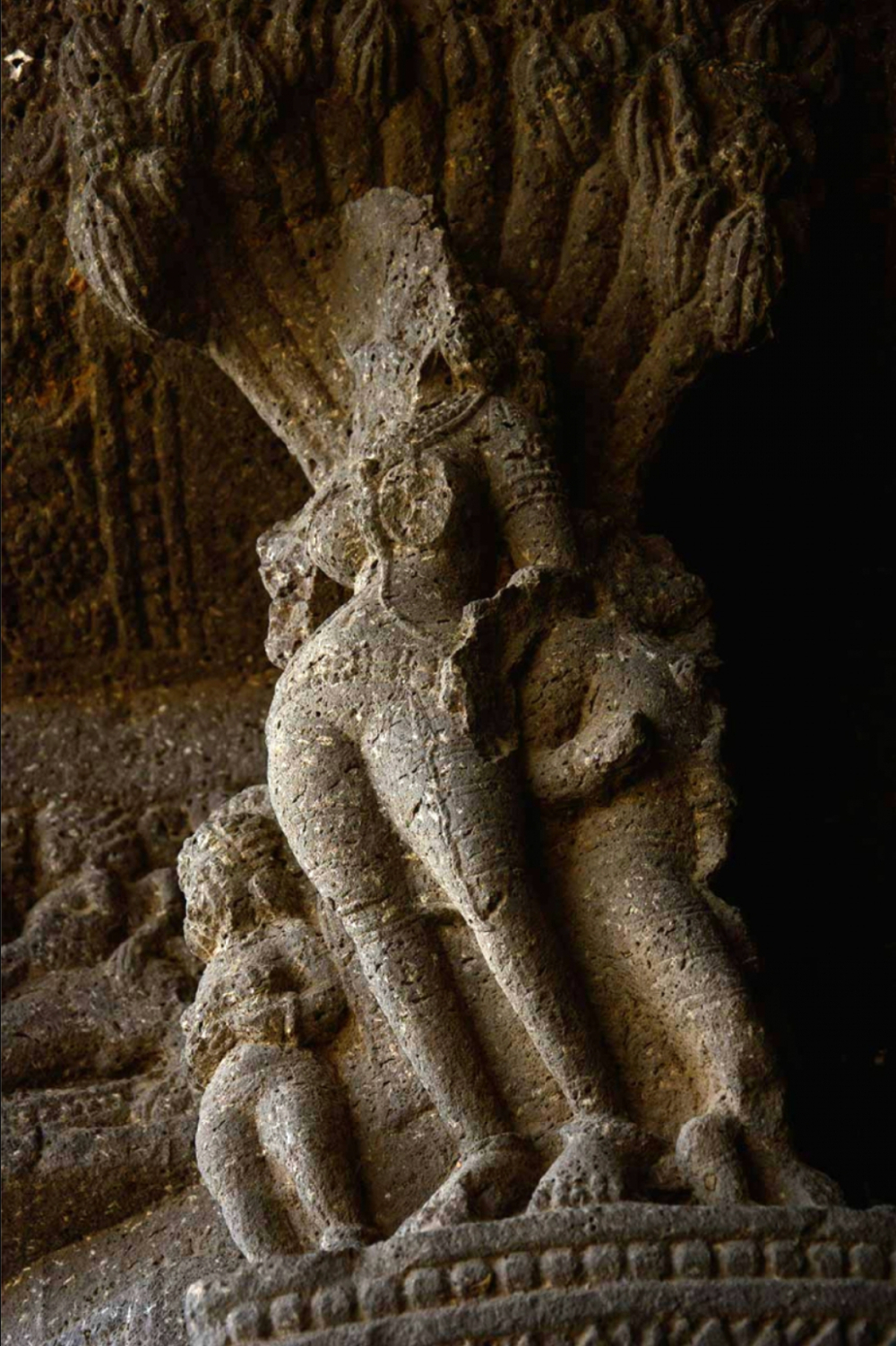
Tree goddesses as pillar brackets in Cave 1 veranda. (Picture Credits: Sahapedia)
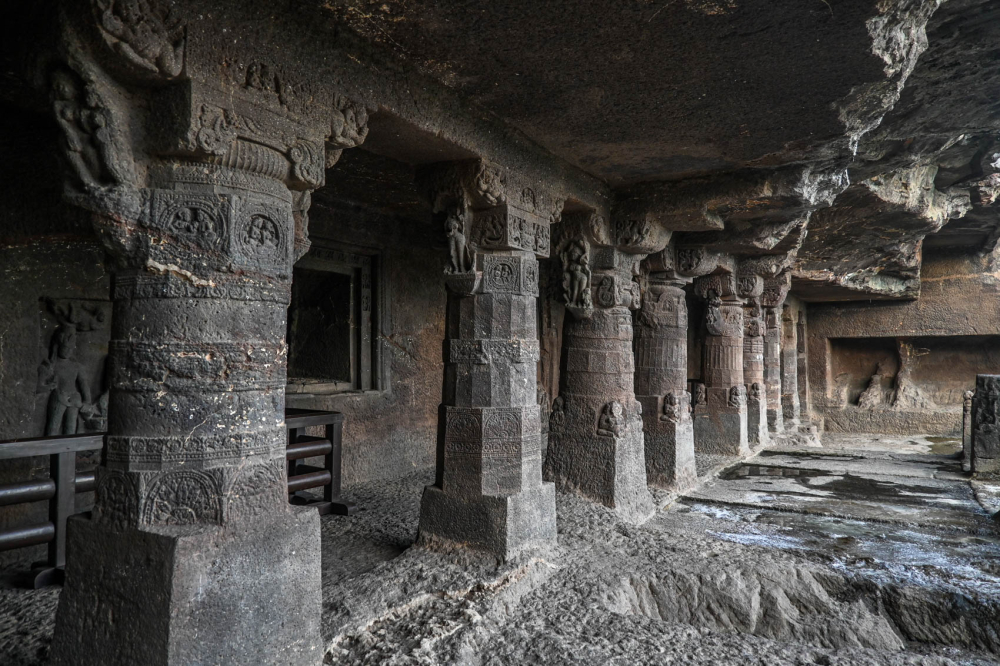
Gana figures on square bases of pillars in Cave 1. (Picture Credits: Anil Purohit)
Cave 3
In Cave 3, the main shrine has a partially damaged figure of the Buddha at its centre, seated on a double lotus in a teaching posture. Attendants stand at both sides, along with flying apsaras, dwarfs and crouching elephants. The most remarkable feature of the cave are the rounded devotee figures flanking the central Buddha figure. The life-like sculptures are huddled in a corner, worshipping the Buddha in silent adoration, their facial features and hairstyles reminiscent of Greek figures.
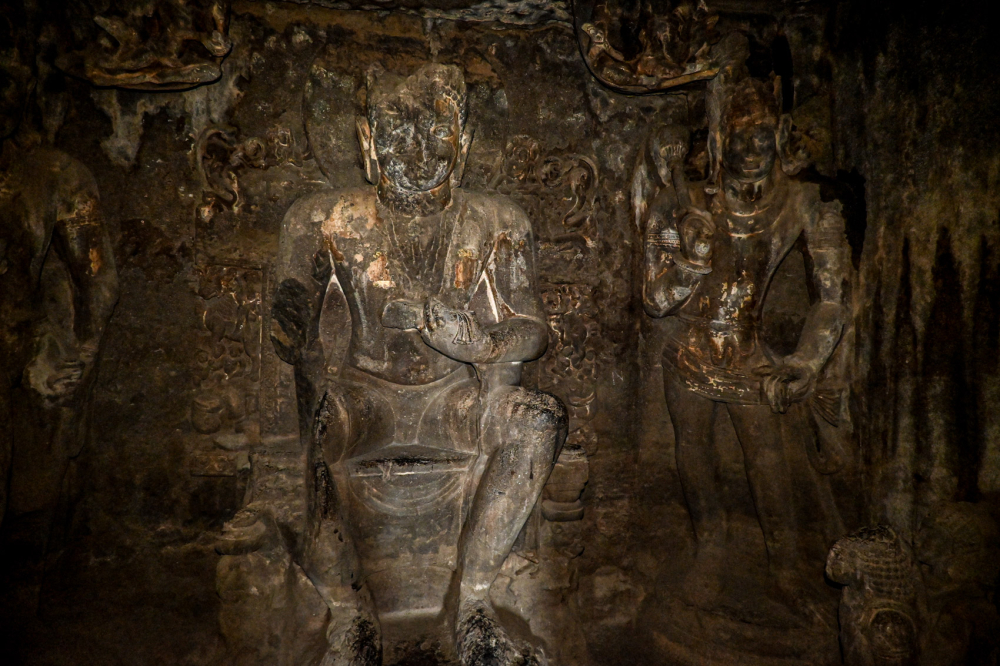
Interior of the main shrine of Cave 3. (Picture Credits: Anil Purohit)

Devotee figures in the main shrine of Cave 3. (Picture Credits: Sahapedia)
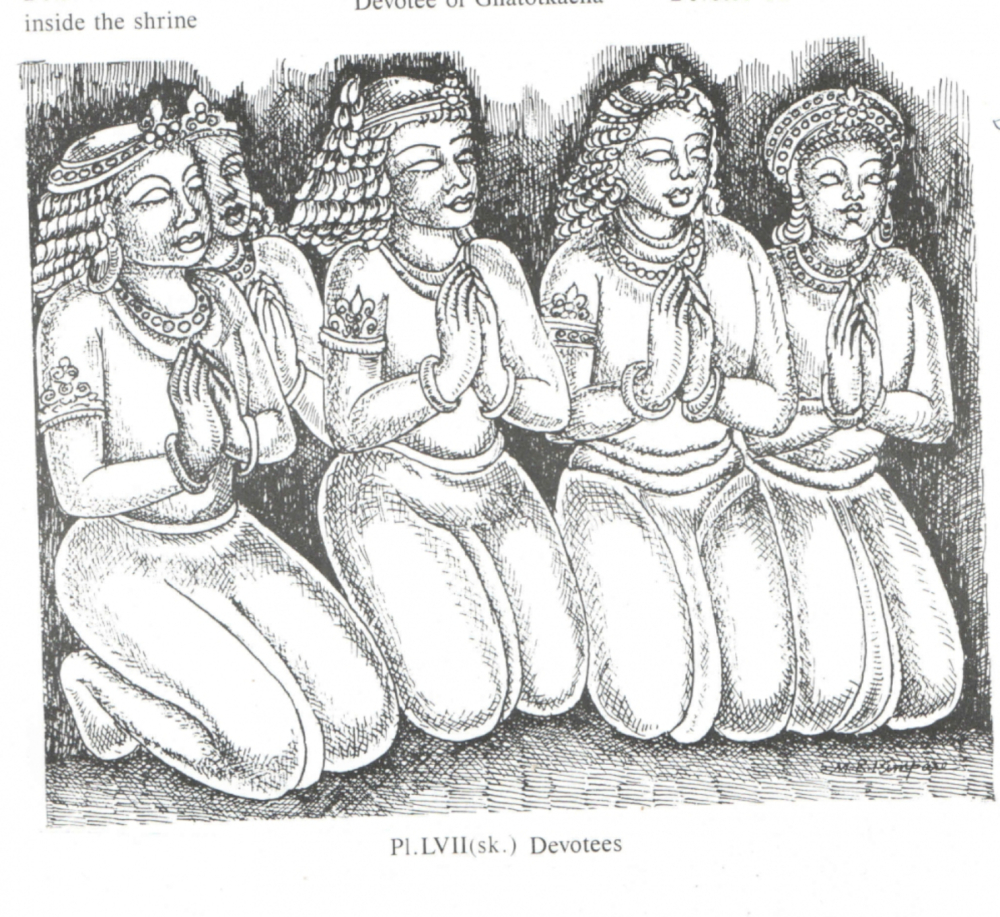
Sketch of devotee figures in the main shrine of Cave 3.
Cave 6
In the main shrine of Cave 6, the entrance door is protected by two huge dwarapalas, above which are carved flying couples and dwarfs. A figure of Tara is carved on the right side of the male attendant (identified as Maitreya) on the left. A stupa and a Buddha figure seated in padmasana are carved on his crown. His right hand displays vitarka mudra.
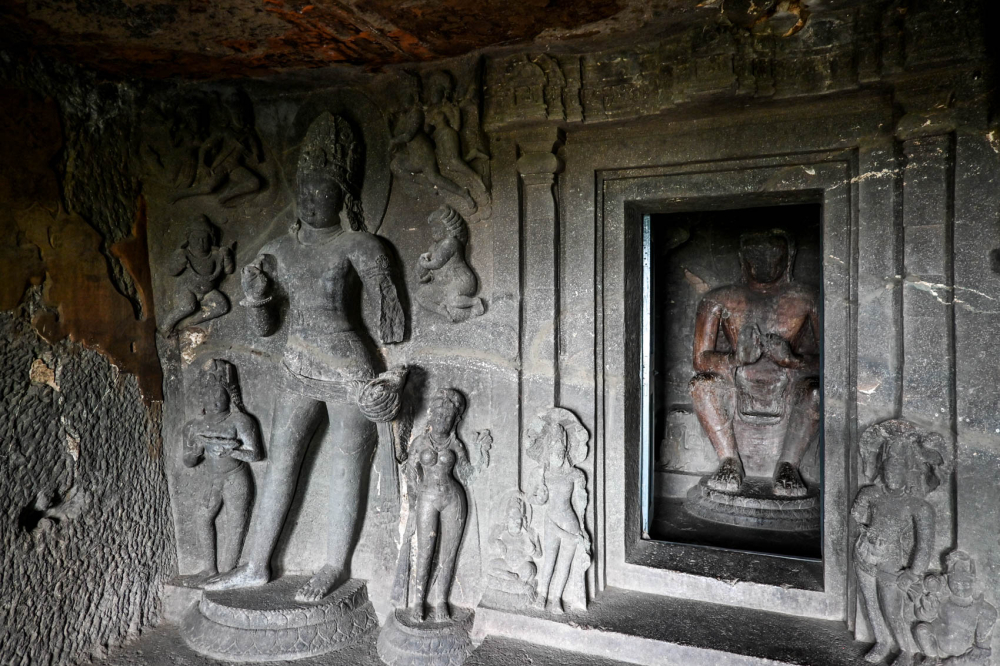
The dwarapalas outside the main shrine in Cave 6. (Picture Credits: Anil Purohit)
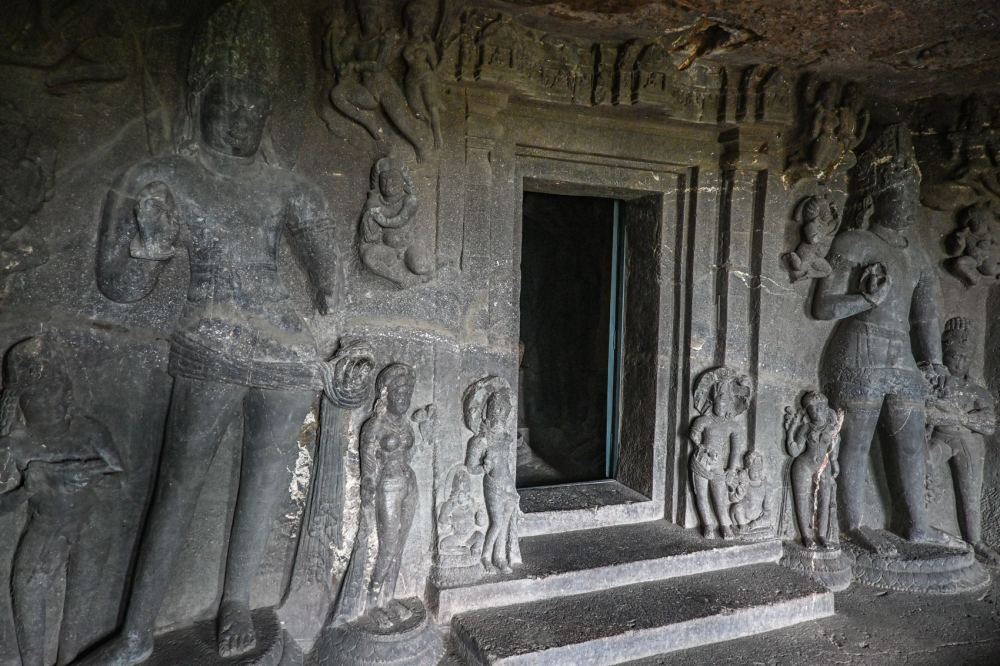
The dwarapalas flanking the main shrine door in Cave 6. (Picture Credits: Anil Purohit)
Cave 7
This completely intact cave is the most developed one among all the three groups. It has a veranda in the front supported by four pillars and two pilasters. On the back wall of the veranda, two huge sculptures are carved: Avalokitesvara on the left and Manjusri on the right. Avalokitesvara stands in the samabhanga pose. His left hand is in abhaya mudra, and his right hand holds a lotus stalk. His jata mukuta bears Buddha Amitabha’s image, with flying dwarfs placed above. The panels surrounding Avalokitesvara depict the eight perils of travelling (Mahabhaya)—fire, robbery, slavery, drowning, attacks by lions, snakes, attacks by elephants and an ogress. Near each scene, Avalokitesvara is shown in a flying position, arriving just in time to rescue his devotees.
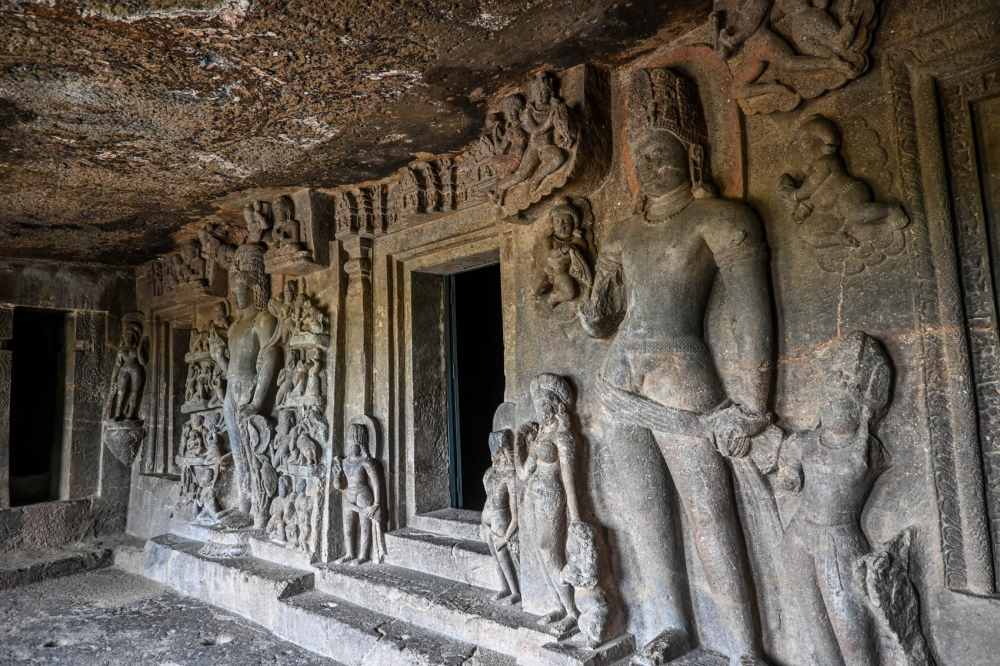
Ashtamahabhaya Avalokiteshvara (left) and Manjushri (right) flanking the main shrine door in Cave 7. (Picture Credits: Anil Purohit)
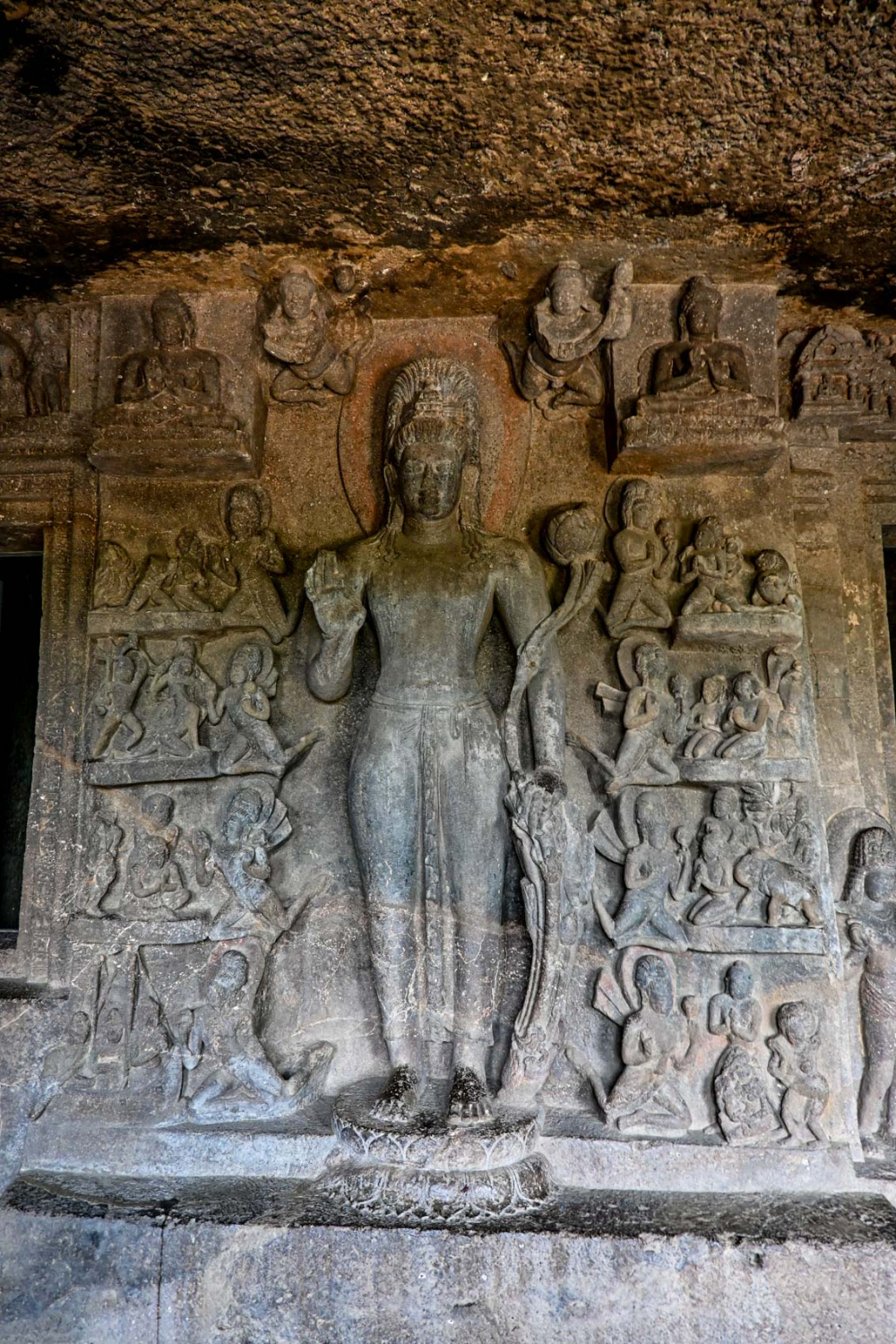
Ashtamahabhaya Avalokiteshvara flanking the main shrine door in Cave 7. (Picture Credits: Anil Purohit)
The shrine is carved in the centre of the main hall. On the right of the shrine, stands Tara in the tribhanga position, wearing heavy jewellery. Her intricate headdress features a rosette, lotus flowers, beaded strings, etc. The top part of her earlobe is adorned with earrings. Female attendants stand on both sides, also featuring elaborate hairstyles.
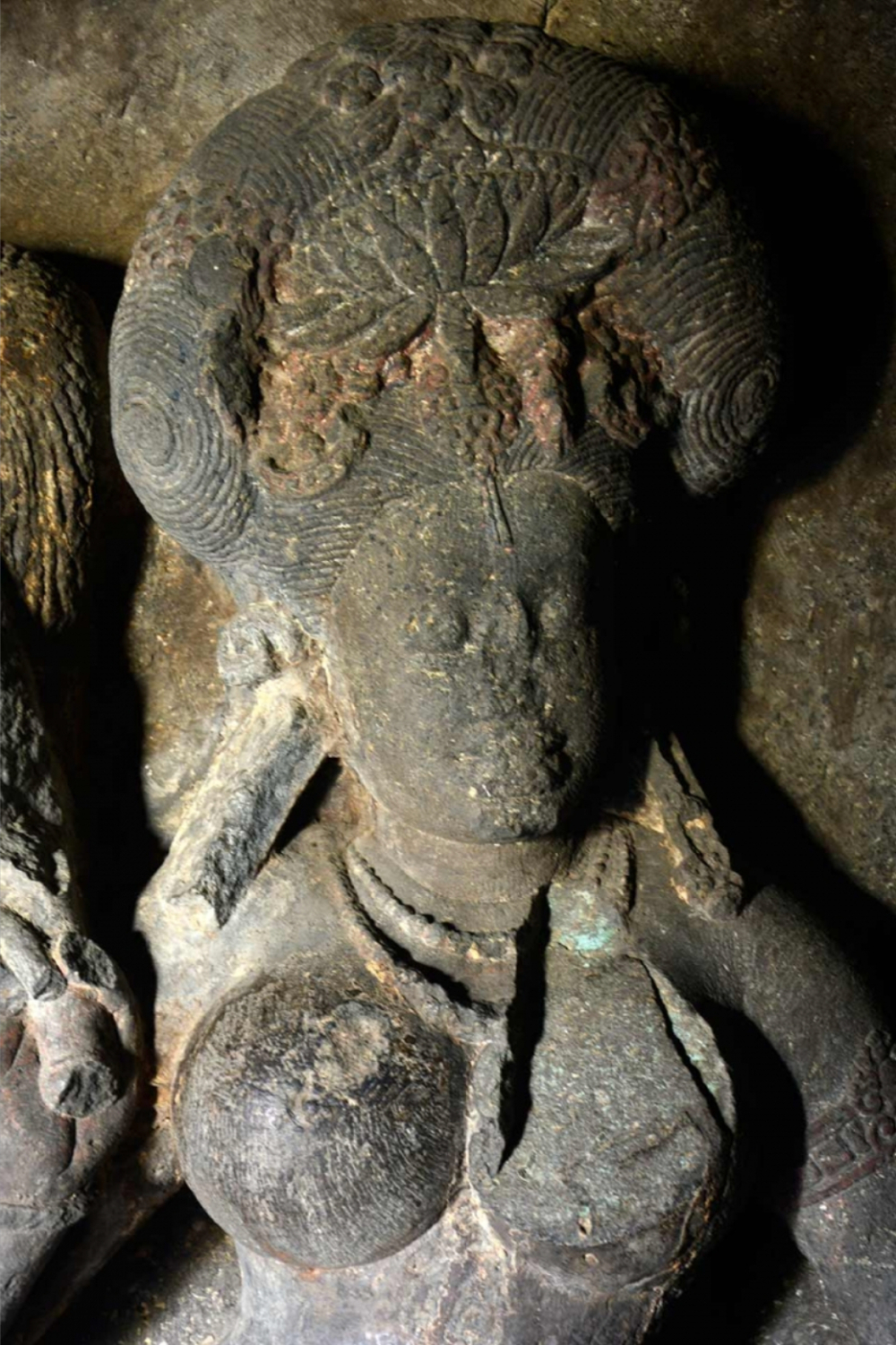
Detail of Tara figure on the right of the shrine in Cave 7. (Picture Credits: Sahapedia)
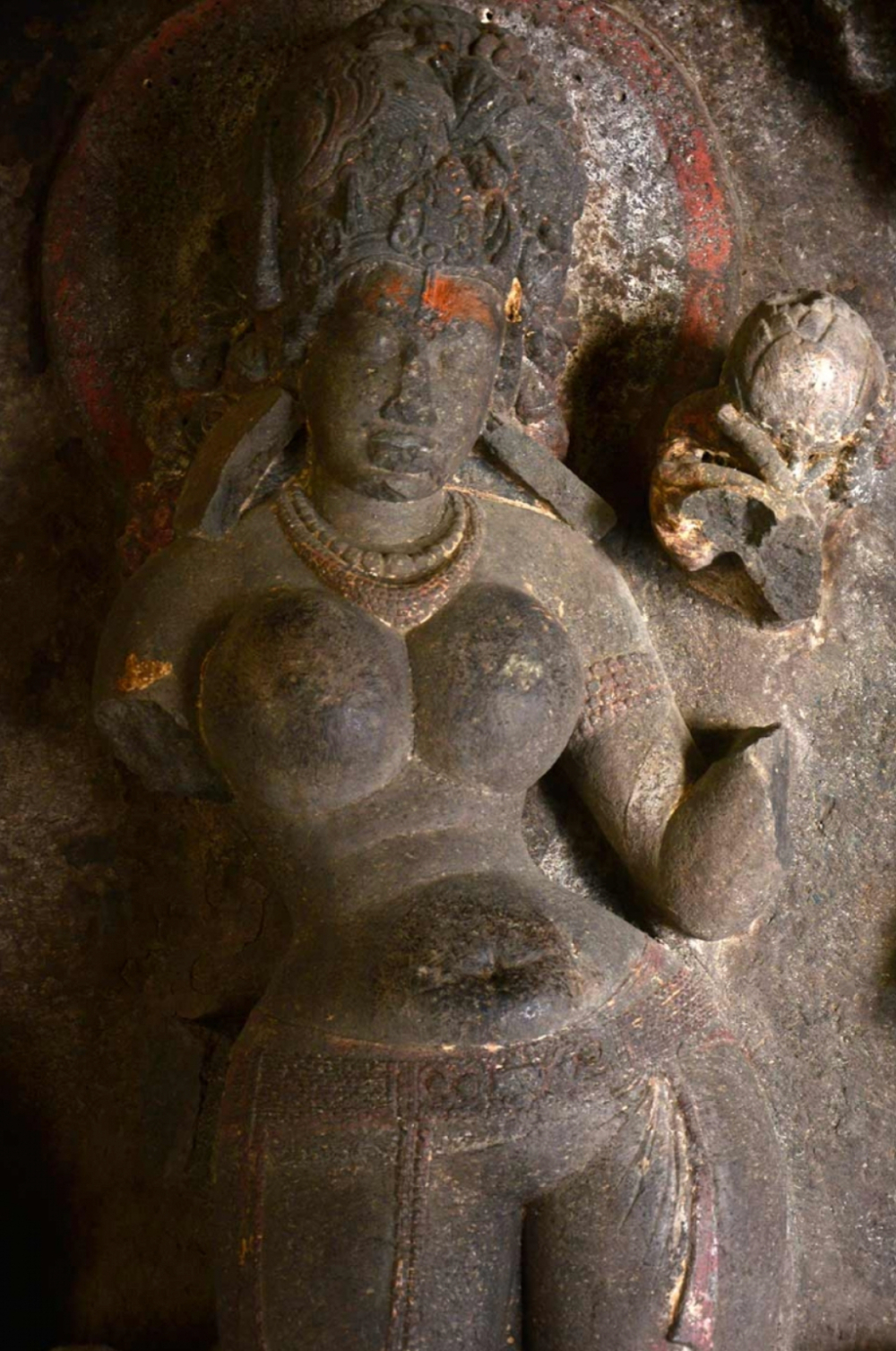
Detail of Tara figure on the left of the shrine in Cave 7. (Picture Credits: Sahapedia)
On the left side of the shrine is a Tara figure, though missing both hands, displays extreme voluptuousness and grace, standing in the tribhanga pose. The lotus stalk indicates the presence of a lotus flower in the right hand. Her hair is decorated with pearl strings, lotus flowers, rosettes, leaves and a crescent motif.
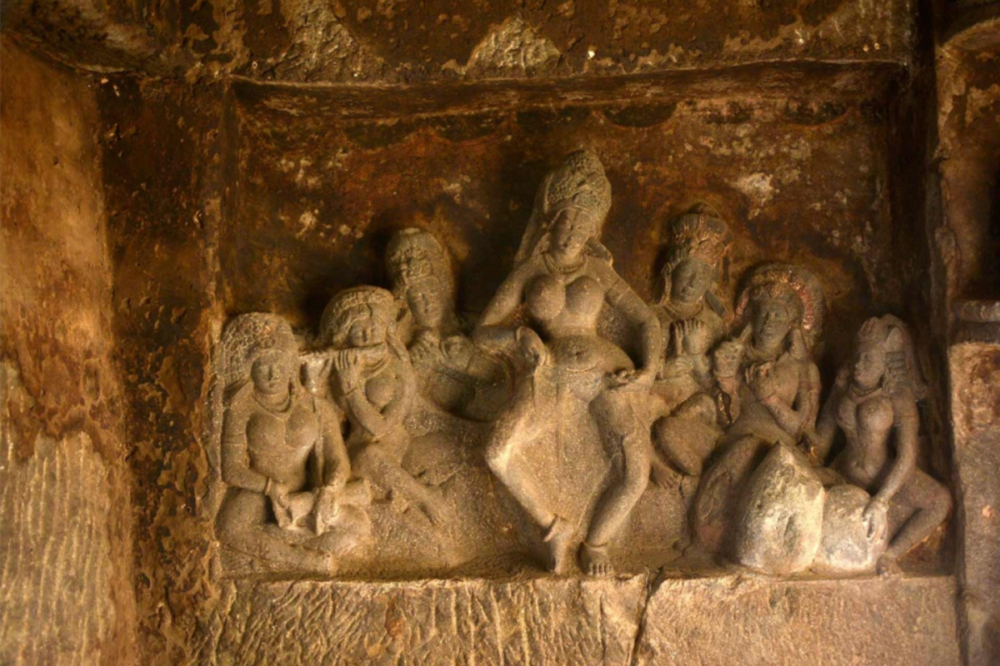
Dancing panel in main shrine of Cave 7. (Picture Credits: Sahapedia)
Inside the main shrine, on the left, is the famous Dancing Panel. The central dancer is captured in a Bharatanatyam pose mid-performance, oblivious to everything around her and focussed completely on the movements of her feet, hands and eyes. The orchestra is composed of women playing musical instruments like mridanga, flute, cymbals and damaru.
Caves 9 and 10
At the entrance to the hall, to the left of the first shrine, is a sculpture showing the Mahaparinirvana scene, where the Buddha bids mother earth farewell and takes refuge in heaven. This is flanked by the standing four-armed figure of Padmapani, known as Sadaksari Avalokitesvara. He wears a jata mukuta, with a figure of the Buddha in the crown. He holds a rosary in the upper right hand and a lotus stalk in the left hand. His lower right hand is in the varada mudra.
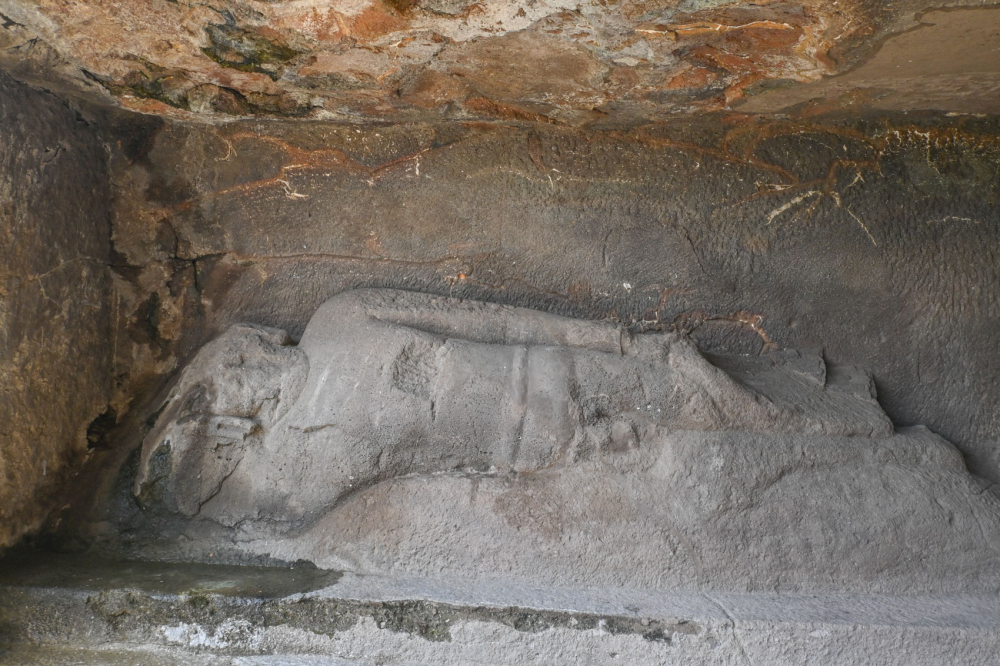
Mahaparinirvana scene, Cave 9. (Picture Credits: Anil Purohit)
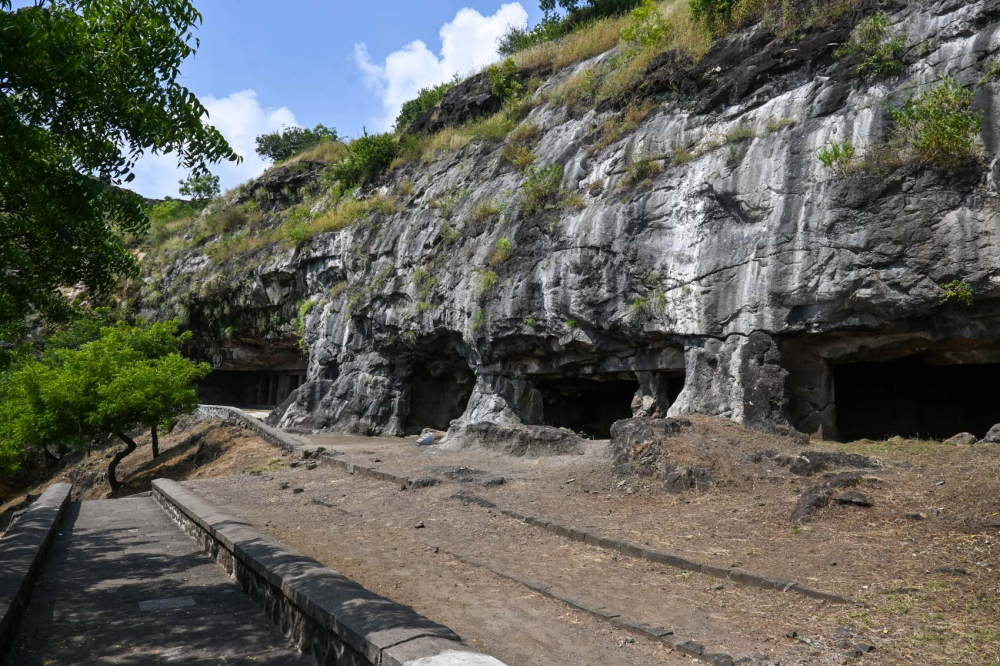
View of Cave 10. (Picture Credits: Anil Purohit)
While the Aurangabad Caves may not match Ajanta or Ellora’s scale, their sculptural artistry achieves comparable excellence.
This essay has been created as part of Sahapedia's My City My Heritage project, supported by the InterGlobe Foundation (IGF).
